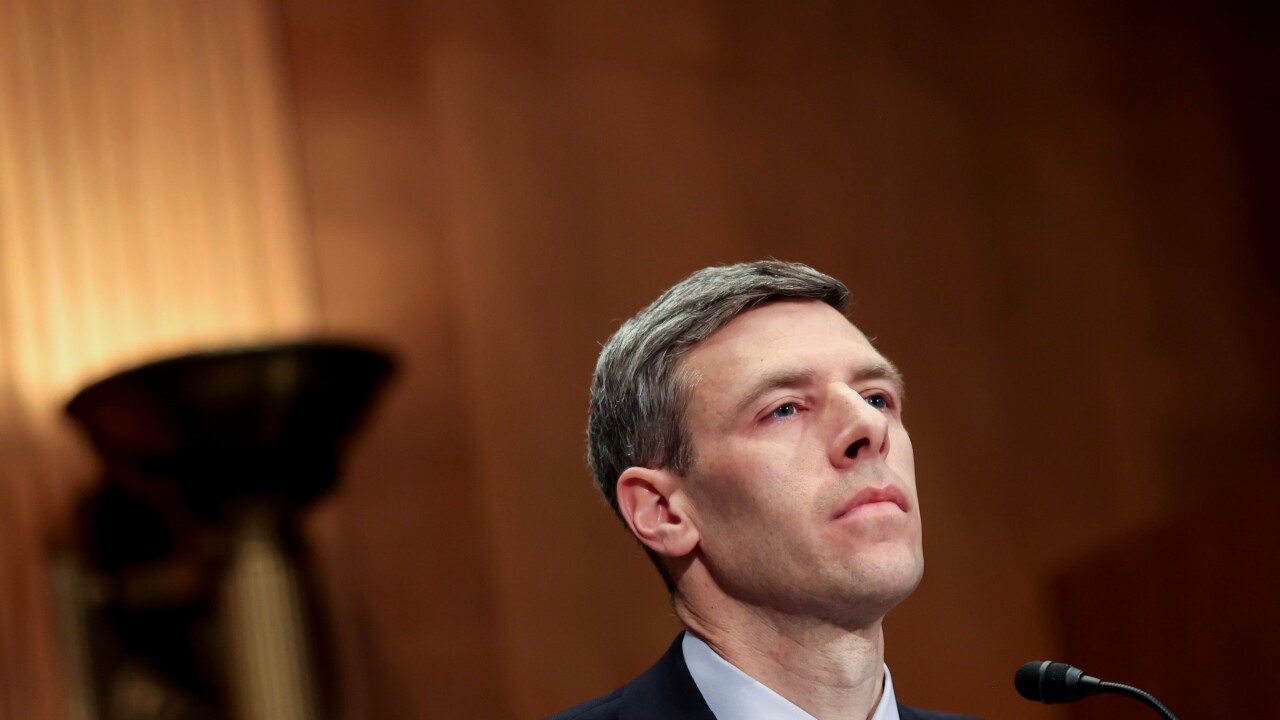
Make no mistake—branches are here to stay.
Though the net number of credit union branches has been falling over the past few years, no industry insiders or experts expect to see online-only or "direct" credit unions popping up anytime soon.
Instead, they expect CUs to take a more strategic approach to their branch networks. And while the total number of branches may be decreasing at both CUs and banks across the nation, the death of the branch has been greatly exaggerated.
(The numbers are not pretty, however. The CU community lost a net 46 branches in 2015, and has already lost more than 90 so far this year, according to FIS FedFis, a financial services research firm in Austin, Texas.)
John Mathes, director of brand strategy for Seattle-based Weber Marketing Group, is responsible for leading the firm's clients through the branch prototype process by facilitating what he calls "visioning sessions."
A New Approach
Mathes told Credit Union Journal that he expects to see the continued adoption of a "strategic approach to branching."
This approach is primarily led by using data to figure out where to expand brick-and-mortar locations, as well as a focus on the kind of branded experience the credit union is trying to deliver at each one.
"No longer does a one-size-fit-all design with a few square footage variations work across the entire network," Mathes said. "We are seeing more of our clients understand that in order to survive and compete, they first have to have a clearly defined and differentiated brand, and then in turn, that brand needs to manifest in the physical space to create a uniquely own-able environment that is different than the financial institution down the street."
The largest banks are investing in mobile and online channels while cutting costs by consolidating their physical branch networks, noted Elizabeth Rouse, senior product manager, U.S. financial institutions at SNL Financial in Charlottesville, Va.
"Mergers and acquisitions also have driven a net bank branch decrease," Rouse said. "The general sentiment from both banks and credit unions is that branches are still a critical factor in customer or member retention; however, firms with large and dense networks are focused on eliminating redundancy and low-profitability branches throughout their networks."
Despite these issues, some credit unions are looking to grow their footprint, not reduce it.
"Although credit unions are operating in the same markets as banks, and are seeing the same customer migration to mobile and online, many of our credit union clients are eager to expand their membership base by expanding into new markets, or better positioning themselves within their current markets," Rouse said.
Many large national and regional banks spent years putting up branches simply to capture market share with a "build it and they will come" mentality, according to Mathes.
"This worked pretty well when transactions were driving foot traffic, but now, with in-branch transactions plummeting, they are being forced to shrink their presence and reshuffle their strategy," he said.
Credit unions, on the other hand, have always been more cautious and conservative with their members' money when it comes to expansion, according to Mathes.
In addition, the CU philosophy of serving the best interests of all members has led to branches being more advisory in nature, thus still serving a viable purpose in today's environment.
"We are seeing more interest in branch modeling from credit unions than ever before during our 28-year history," he added.
Not all credit unions are reducing their branch network, however. To wit, United FCU in St. Joseph, Mich., has a long history of growth, as it is a product of multiple mergers over the years. That growth was topped by the October 2006 melding of what had been a Whirlpool employees' credit union with another employees' credit union.
Since then, United FCU has acquired troubled Clearstar Financial CU in Reno, Nev., and bought Griffith Savings Bank in Indiana, making United FCU the first credit union in history to acquire a bank.
Today, United FCU has a total of 28 branches in six states — Michigan, Indiana, Ohio, Arkansas, North Carolina and Nevada. Overseeing this far-flung empire is Stacy Fillmore, SVP of lending and operations, who has visited every branch. She said the key is the CU's mission and mindset.
"We truly believe we can be the best in the industry at leveraging the benefits of size, while offering local service," Fillmore said. "We do have a diverse footprint. The majority of our operational staff is in Michigan, but we have staff in Nevada, as well, which offers help in the Pacific time zone when it gets late in Michigan."
In some ways operating in disconnected states can be "more complex," Fillmore acknowledged, such as dealing with various state laws concerning auto titles, but she insisted the solution starts with people.
"We continue to grow where our members are asking for convenience and new locations," she said. "We are working on opening a couple new branches now, so by the end of this year will have opened nine new branches in 2015-16. It was our members who told us where we need to be. We are investing in technology, but member feedback helped us pick locations."
Expansion is a "very methodical process," Fillmore explained. She said United FCU has a business intelligence group, plus it solicits opinions from consultants in addition to listening to members.
Though many banks are pulling back, Fillmore said management at United FCU "sees tremendous value" in expanding its footprint. "Although there are studies that say transaction volume in branches is decreasing, we actually are seeing our branch volume increasing, plus we are seeing an increase in online and mobile usage."
According to Fillmore, United FCU will continue to look at expansion, but it will begin with the communities it serves first and expand out from there. For example, she noted the credit union recently added branches in Carson City, Nev., after noticing many of its Reno members lived in Carson City.
Members are a source not only of ideas on where to expand, but also how to decorate branch interiors.
"We surveyed our members with different mock-ups, color schemes and models," Fillmore related. "The members actually selected what our branch of the future would look like. With each grand opening, we have invited the community, but we have made it more like a party and less like a formal financial institution function. In Alma, Ark., we invited the local high school band and cheerleaders. It was a fun show.
The branch manager helped with the pom routine while the band was playing."
Ongoing consolidation in the credit union space means there is always the possibility of mergers and acquisitions, Fillmore said, "but there is nothing on United FCU's radar right now."
Another form of branch network expansion is adding branches after acquiring a troubled credit union.
Larry Hoff, CEO of $953 million Fibre Federal Credit Union, Longview, Wash., said his credit union's branch growth from nine retail branches in 2015 to 14 in 2016 was the result of such a transaction, and that comes with its own set of challenges.
On April 30, 2015, NCUA liquidated TLC Federal Credit Union of Tillamook, Ore., with Fibre FCU assuming TLC FCU's members, shares, loans, and certain other assets and liabilities. At the time of liquidation and subsequent purchase by Fibre Federal Credit Union, TLC served 13,375 members and had assets of approximately $109 million, according to the credit union's final call report.
TLC FCU had five branches, all in Oregon. Hoff said adding the new facilities to Fibre's existing network was not difficult mechanically — the "harder part" was cultural.
"Every organization has a different culture," Hoff said. "If you just add branches to your organization, there are no cultural differences. But when you acquire another credit union that is 50 or 60 years old, there are differences that do not blend overnight. Plus, the branches are in different communities, so we had to understand the regional differences."
Fibre has "constantly" addressed the many differences over the past 13 months, Hoff noted, through marketing efforts, HR efforts and "truly an organization-wide effort."
The change started the evening of April 30, 2015, when representatives from Fibre were allowed to put up new signage. Overall, Hoff said the addition has "gone very well," despite running two core processing systems. Once core conversion is complete this November, Hoff expects daily operations will be "significantly easier."
"When we took over we launched several marketing campaigns to show off our whole range of products," Hoff recalled. "The wonderful staff of TLC was dealing with the acquisition issue for more than a year, so when we went in May 1 with marketing and we tripled our lending in the first few months. We still have significantly attractive opportunities for growth because the previous staff was so restricted."





